This is one of the few hikes in Rocky that I actually completed in the winter first, and that experience really emphasized the fact that everything looks so different beneath the summer sun than it does covered in snow. I’d never done much winter hiking before moving to Colorado but I learned quickly that winter navigation is no joke. The trail signs are often completely buried, and you can’t necessarily rely on familiar landmarks because they may not look very familiar this time of year.
Fortunately, the main trails in Rocky are still moderately traveled in the winter, so as long as you’re not the first person up after a storm you should have footprints to follow. We also always bring along a trail map, and I have the COTREX app downloaded on my phone, which is a free Colorado hiking app that GPS tracks you even when you’re out of phone service range (just make sure to download the appropriate section of the map first). Every few minutes, I’d pull out my phone and double check the GPS, and we managed to stay on the trail.
There are 3 options for hiking to Lake Haiyaha: (1) depart from Glacier Gorge and form a giant loop that includes Alberta Falls, (2) depart from Glacier Gorge toward Bear Lake, or (3) depart from Bear Lake. The latter option is the shortest, and this is the route I’ve taken, though I’ve since learned that option 1 is the preferred route in the winter as it has the lowest avalanche danger.
From the Bear Lake trailhead, begin by following signs toward Nymph and Dream Lakes. Just prior to your arrival at Dream Lake, you’ll come across the trail split for Lake Haiyaha. Beware that the sign will probably be buried in the winter.

The trail to Lake Haiyaha climbs the hill immediately south of Dream Lake in a set of steep switchbacks. In the summer, this section of the trail was no problem. In the winter, the steepness of the hillside combined with the softness of the snow was problematic. We were on snowshoes, and you’ll need them in the winter. This section of trail is much less travelled than the path up to Dream Lake. Even so, we kept sinking in and sliding down the hill with every step. This is a pretty steep trail, and once it rounds the corner out of the Dream Lake valley, the exposure becomes much greater (hence this not being the preferred winter route).
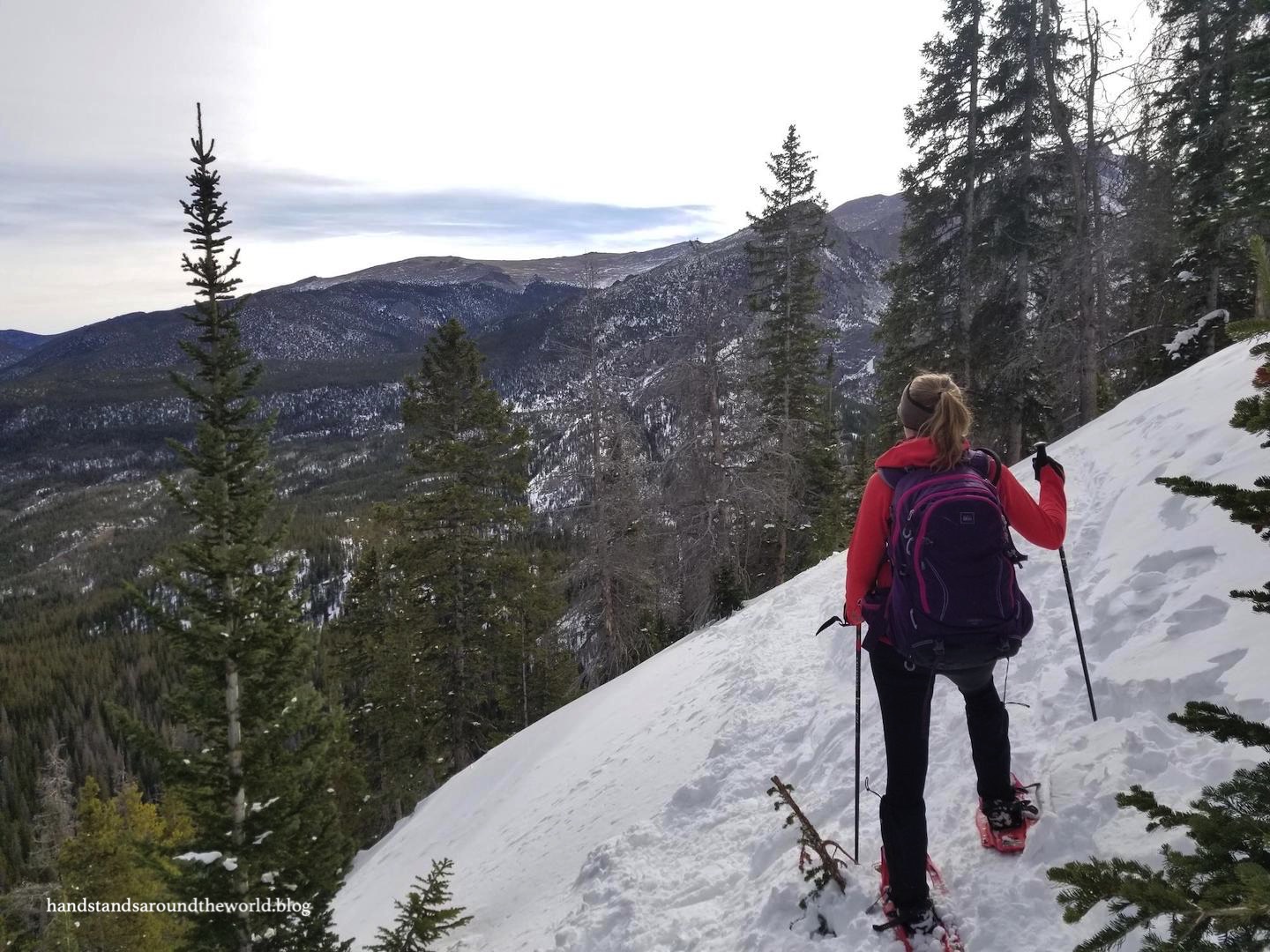
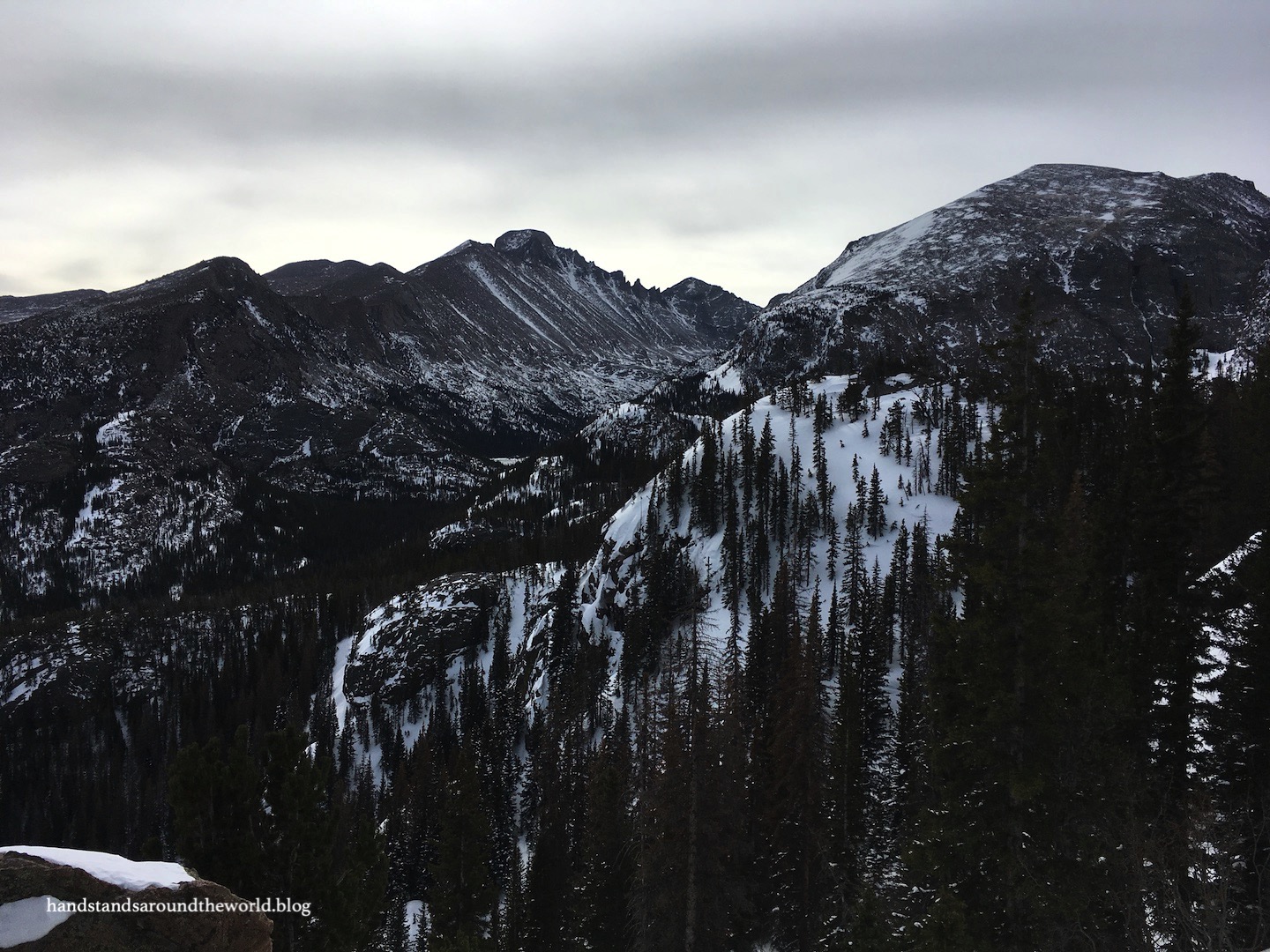
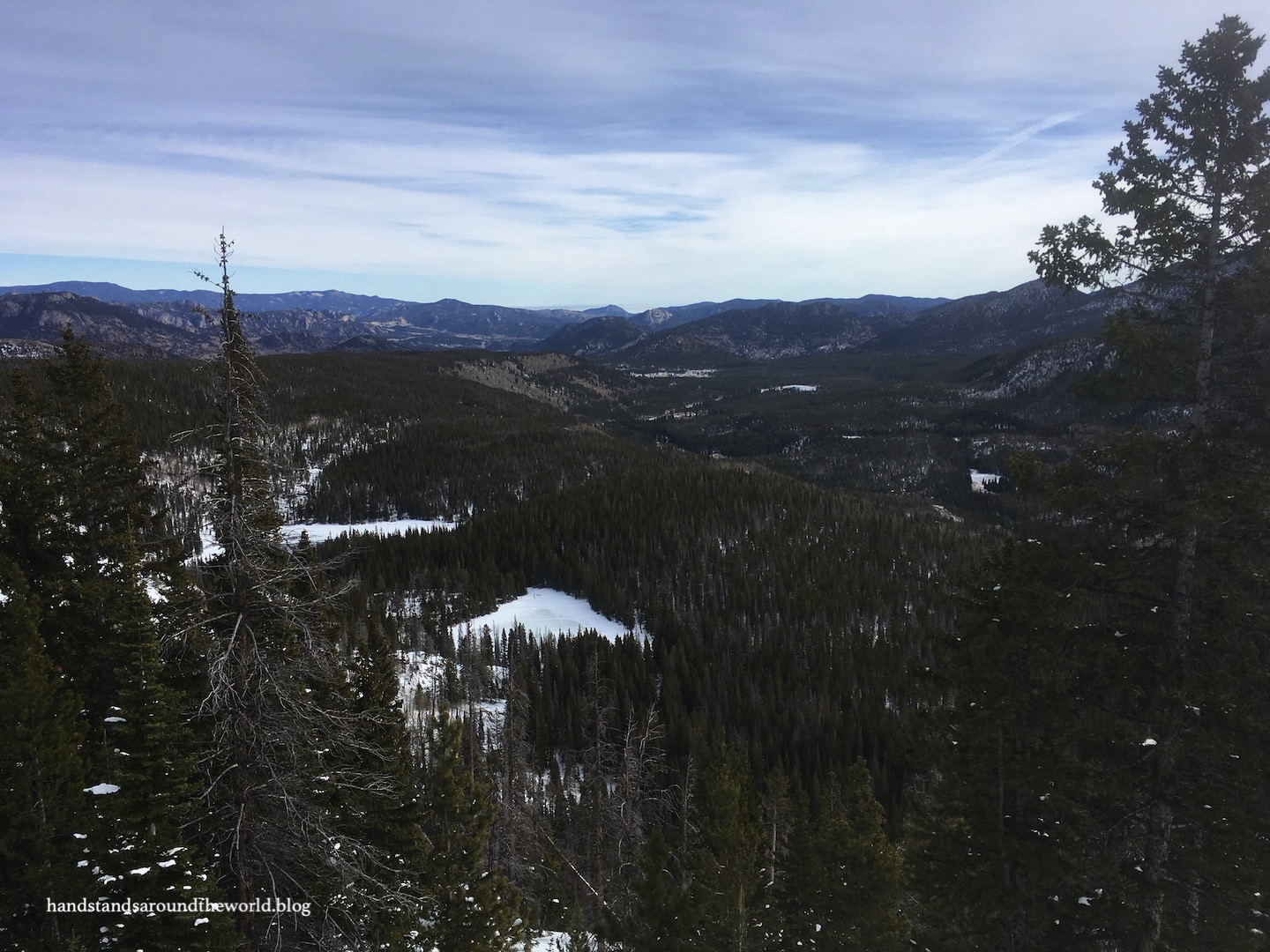
The trail loops out and around into the Chaos Creek drainage. It’s about 1 mile (1.6 km) from Dream Lake to Lake Haiyaha, but it was slow going in the winter so it felt much longer. At one point, we ended up at a dead end; the loosely packed trail came to an abrupt halt and there wasn’t any obvious path for continuation, despite the fact that my GPS showed us pretty much on track. Rather than attempt to climb through branches and brush with snowshoes on our feet, we turned and headed straight down to the creek, which we then followed up to the frozen lake. It wasn’t the correct trail, but it did get us there.
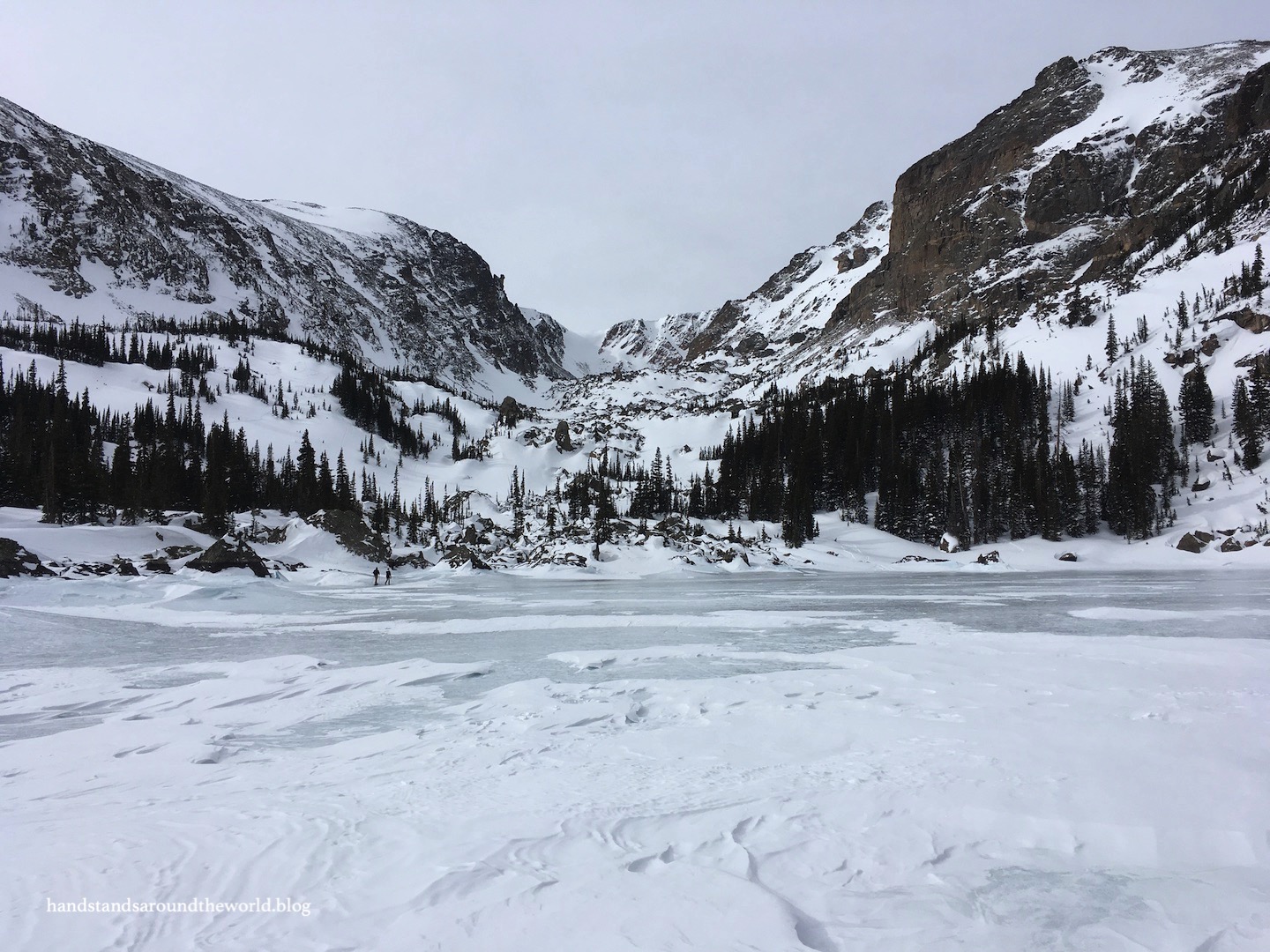

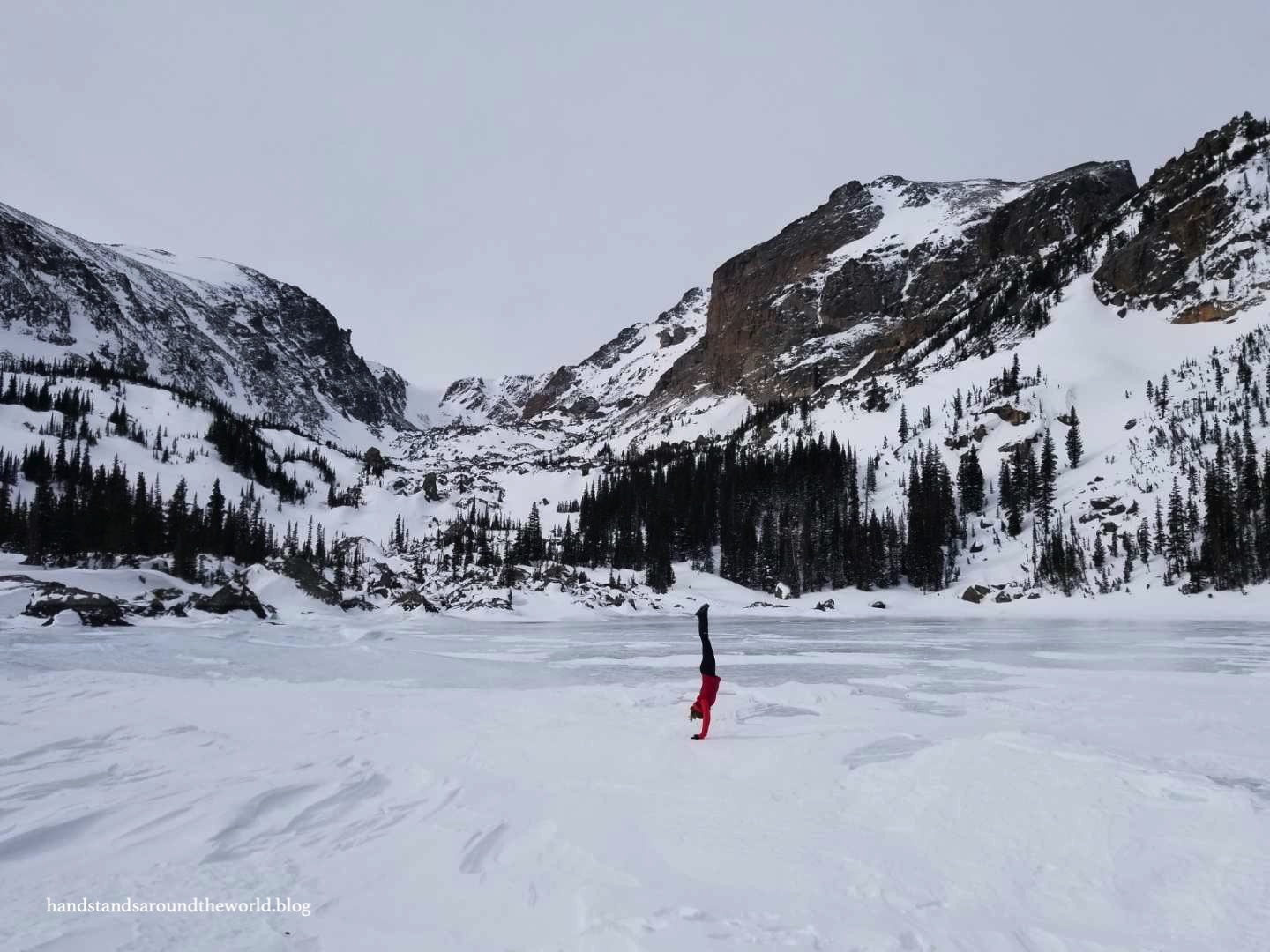
The second time I hiked this trail was in late June, but the never-ending winter of 2019 meant that there was still some snow. My mom and I had microspikes and hiking poles, and they were necessary to complete this hike safely. The others we passed on the trail without them were slipping and sliding all over the place.
The trail was easier to follow this time around and led us across Chaos Creek and around to the opposite shore of the lake. “Haiyaha” means “large boulders” in the Arapaho language, and it’s definitely an accurate name for this lake. The haphazard collection of giant boulders is certainly a highlight of this destination.
Lingering snow, however, made it nearly impossible for us to get down to the shore as the snow + boulder combo made it challenging to find a path that didn’t involve collapsing snow, feet getting stuck between the giant boulders, or broken ankles. It took us 5 tries to find a route we could walk safely.


But if you can make it to the lake, it’s gorgeous! It may not have the towering, uniquely shaped mountains behind it, but Lake Haiyaha is every bit as beautiful as the other lakes in the Bear Lake area and I highly recommend a visit.
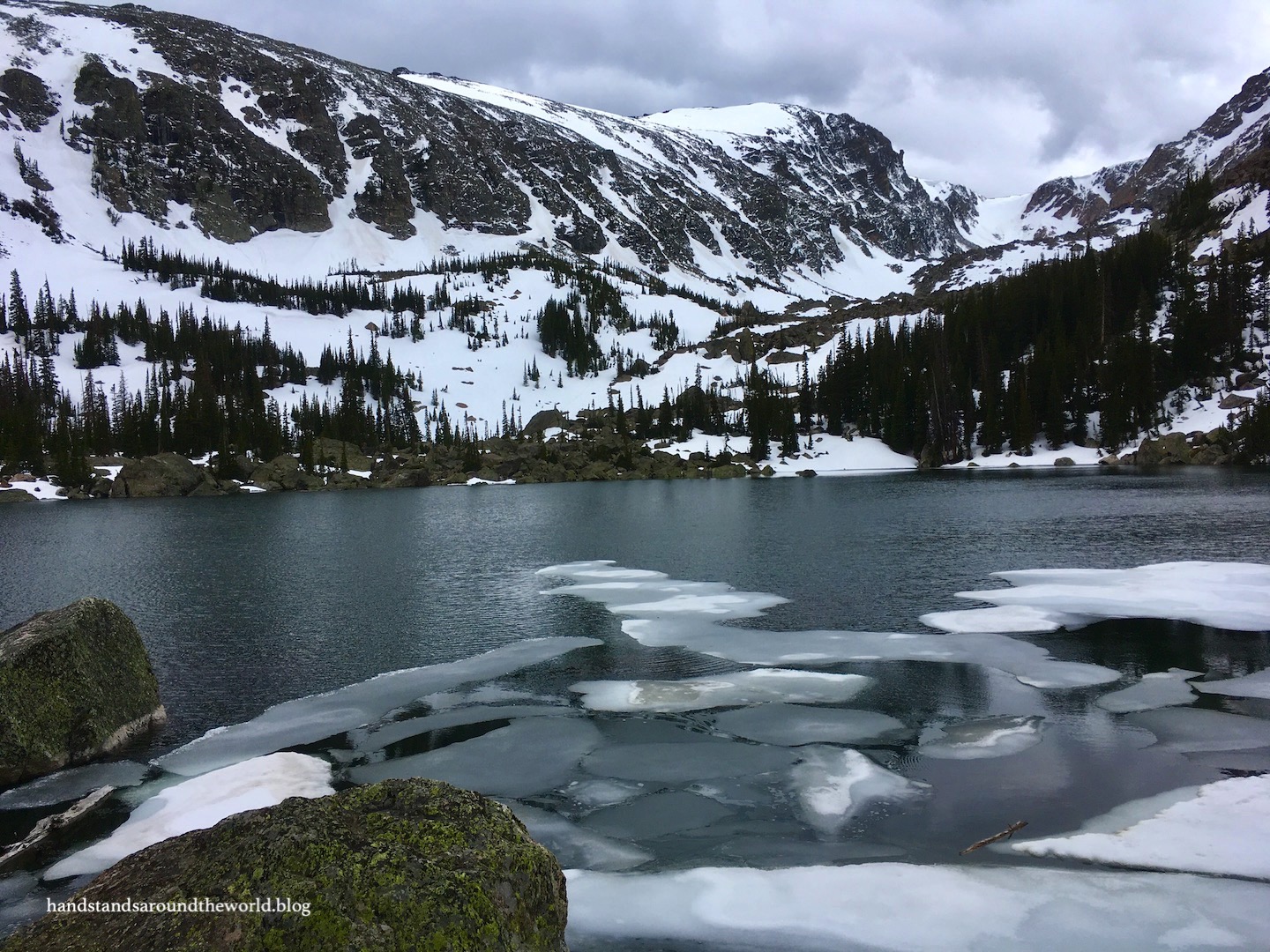
(Update: in June 2022, a rockslide on the slopes above Lake Haiyaha released a large amount of sediment into the lake, changing its color. You can see newer photos of the lake here.)
The Important Stuff:
- Getting there: this hike departs from the Glacier Gorge or Bear Lake Trailheads (Glacier Gorge is the better choice in the winter). Consider leaving your car at the park-n-ride in the summer and taking the free shuttle to the trailhead
- Fees and passes: there is a $30/car daily or $35/car weekly entrance fee to RMNP; interagency annual passes are accepted. From May-Oct, if you arrive after 5:00am you will also need a timed entry permit to access this trailhead
- Hiking: round-trip distance to Lake Haiyaha from Bear Lake is 4 miles (6.4 km) with 800 feet (244 m) of elevation gain; the other two options are slightly longer
- Other: this is a less traveled trail than the others in this area; in the winter you’ll definitely need snowshoes and good route-finding skills
- For more information, see my posts on visiting Rocky Mountain National Park and winter hiking tips and safety


I am just working on my handstand … so challenging but I love it. any tips as I am still nowhere near to stand on my own . xx
LikeLiked by 1 person
You’d think I’d be a good person to ask about this, but I’m not sure I am. I started gymnastics when I was 9 so I don’t even really remember learning how to do them. I guess my suggestion would be to practice headstands to help you feel comfortable with being completely upside down (and to help your brain learn what that feels like). Then practice handstands against a wall… first just practice getting yourself into position however you can and holding it. Then practice kicking up into it (so if you kick up too hard, you just kick the wall rather than falling into something). Also, make sure you are able to fall gracefully when you do fall, so you don’t hurt yourself.
I dunno, is that at all helpful? It takes a while to get the hang of it, but once you have it you’ll never forget.
LikeLiked by 1 person
I started this summer and so far I can hold 1 and half minute handstand but with resting my feet on a chair. my body is on 90 degrees. seems easy when I talk about it but it isn’t. im also trying to lift one hand at a time… next step was to do it against a wall with my feet fully up but not sure when ill feel ready for that step….
anyway as you said its all about practice. im just hoping it won’t take me forever 😜😂
are you still doing gymnastics? xx
LikeLiked by 1 person
No, not for about 12 years. But I can still do some of the skills!
LikeLiked by 1 person
Thats good. its worth keeping with active life :))
LikeLiked by 1 person
Really lovely! I don’t think I’ve seen photos of this lake before.
LikeLiked by 1 person
So pretty! I love hiking the same trail in the summer and the winter to see the differences. Sometimes I actually like hiking it in winter better!
LikeLiked by 1 person
Me too! I’d never done much winter hiking before moving to Colorado but some places here are definitely more beautiful in the snow. And less crowded too!
LikeLike
The snow and boulder combo looks like it was no joke either. Looks like it was worth the challenge as the views from the lake are lovely.
LikeLiked by 1 person
It was! We got a little frustrated but we finally found a route and got to enjoy the lake completely by ourselves!
LikeLiked by 1 person
Spectacular photos! The winter turns the trails into a wonderland. It looks peaceful and pure. Thanks for sharing your adventure. I always like your handstands.
LikeLiked by 1 person
Thank you!!
LikeLike
Wow, beautiful post and fantastic winter photos. I’ve never done winter hiking, but I would love to give it a go. It looks challenging yet serene and beautiful and hiking through such incredible setting is an experience unlike any other. Thanks for sharing and happy trails. Aiva
LikeLiked by 1 person
Challenging yet serene is a great description! We love the peacefulness of it. You should definitely give it a try!!
LikeLiked by 1 person
I am going to RMNP in May and I guess I better bring my snowshoes! Thanks, I would have missed out on some of these lakes.
LikeLiked by 1 person
Definitely! You just never know. You may be able to get by with spikes but it’s so weather dependent that time of year.
LikeLike